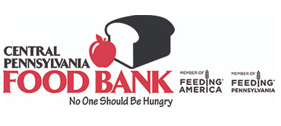 Pennsylvania has experienced a steady uptick in new jobs but the pay that comes with a lot of them hasn’t been enough to push more workers out of poverty or stop them from seeking government aid to eat.
Pennsylvania has experienced a steady uptick in new jobs but the pay that comes with a lot of them hasn’t been enough to push more workers out of poverty or stop them from seeking government aid to eat.
That’s according to a newly released report from the U.S. Census Bureau report that examined poverty, income and food stamp rates. The report, released Thursday, offers a socio-economic snapshot into the households of American families from 2013 to 2017.
Across the nation, state and Lehigh Valley median income rose in both raw money and when adjusted for inflation over that time, which coincided with a post-Great Recession economic boon that is ongoing, Census found. Poverty rates have not changed much while the number of workers, 16 and older, seeking food stamps through the federally funded Supplemental Nutrition Assistance Program has exploded.
In many cases, Pennsylvania and parts of the Lehigh Valley are doing worse than the rest of the nation.
“Essentially, we go through a period of economic growth that is nearly unprecedented once the last recession ended and it leaves people behind,” said Alan Jennings, executive director of Community Action Committee of the Lehigh Valley, a nonprofit provider of services to homeless, jobless and low-income residents. “If the poverty rate went up or down a little bit, it means we are not going to make any progress.”
The nation’s gross domestic product — a key indicator of economic health — went up an average of 2.2 percent between 2012 and 2017.
In that time, poverty, which the Census defines by individual and family income levels, fell 2 percent nationally to 14.6 percent. While that is higher than Pennsylvania, the state’s rate didn’t go down. It stayed flat at 13.1 percent (1.6 million children and adults).
Poverty rose 3.1 percent in Lehigh County to 13.3 percent (46,596). It fell 4.2 percent in Northampton County to 9.2 percent (26,583).
Allentown, the largest municipality, and West Easton, one of the smallest, had the highest poverty rates across the two counties.
The state’s overall poverty rates are not moving downward, even though the state is creating new jobs because most of those jobs tend to be in the lower-paying service sectors, said Matthew Knittel, executive director of Legislature’s Independent Fiscal Office.
For example, in the health care sector, a lot of the jobs are home healthcare providers or social workers or in nursing homes, he said.
But, that could change at some point, Knittel added. Demographics show the state’s working-age population is contracting, which eventually should force businesses to pay more money to compete for employees in a smaller workforce, he said.
“Something has to give,” Knittel said.
Across the nation, the median pay, which is the middle point on the pay scale, rose 8.7 percent to $57,652 when adjusted for inflation over five years. That was better than Pennsylvania’s 2 percent median pay raise to $56,951.
But the data hint that the median increased because workers at the top of the pay scale are seeing proportionately faster wage growth. The state’s mean (average) household income is 37 percent higher than the median, and increased 4.2 percent since 2012, more than twice the rate of the median, which is an indicator of growing income inequality.
At $38,522, Allentown also had the lowest median income. Wind Gap was a close second at $41,284. Those are increases of 1.4 percent and 4.5 percent, respectively when adjusted for inflation over the five-year window.
For the first time in the report’s history, Census records showed two Valley municipalities broke the six-figure mark in median salary.
